We just learned something Monday as reported in both Newsday and The New York Times. The amount of carbon dioxide in the atmosphere continues to rise; it’s up 3 percent over last year. Every time we inhale, we 7 billion humans breathe in oxygen and exhale carbon dioxide. If that isn’t enough, all of the other billions and billions of organisms including both plants and animals with the exception of a very few, also respire, i.e., consume oxygen and discharge carbon dioxide.
Outdoors
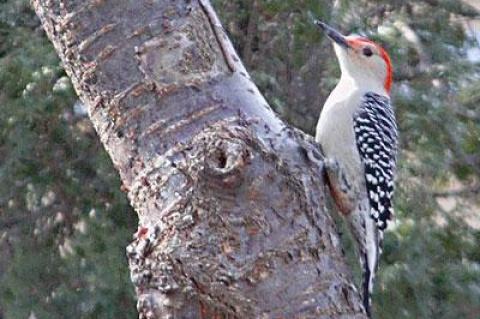 Nature Notes: Mixed Flocks
Nature Notes: Mixed FlocksOn Sunday at noon while sitting in the living room counting cars going by on Noyac Road, there was a sudden spate of bird activity swirling around the front yard. There were purple finches, red-breasted nuthatches, white-breasted nuthatches, chickadees, titmice, a downy woodpecker, and a Carolina wren. They hung around for about 10 minutes before picking up and heading west — all except the Carolina wren, which was not part of the group.
Two big storms in a row; will God try for three? As Bob Dylan recited so eloquently, “Something is happening, and you don’t know what it is, do you Mr. Jones?” It’s like that now in the world of geoclimatology and geopolitics. The two are meshing in a most confusing way, and while wasteful wars besmirch the earth, people by the thousands are dying for no good reason and sea level rises with no sign of abatement.
The Montauk SurfMasters fall tournament will come to an end at noon on Sunday. What promised to be an exciting finale, with plenty of big striped bass for the final weeks of the hard-fought contest, was curtailed by Hurricane Sandy. The big storm with her fierce easterly winds looks to have speeded migrating bass in the direction of their winter haunts and away form Montauk’s casters.
Live and learn, no matter how old. Reading Angus Wilson’s latest local bird-sighting blog, I just learned that there is a new species of Canada goose in town and it’s actually been here for a pretty long time, but it’s new to the East End in a couple of ways. Firstly, it was separated from Branta canadensis in 2004 by the American Ornithological Union and given its own scientific name, Branta hutchinsii, or Richardson’s cackling goose.
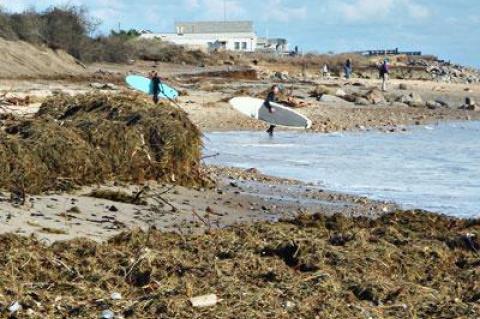 The Fish Are Winning
The Fish Are WinningWith summer prey species flung hither and yon by Hurricane Sandy and the subsequent northeaster, striped bass have been dining on crabs, at least that’s what dockside post mortems have been revealing.
The usual bottom-feeding crab eaters seem to be making up for whatever lost time occurred during the height of Sandy. Blackfish fishing has been productive in recent days. As for stripers in these waning weeks of the season, gannets have been seen diving presumably into schools of herring, high on the striped bass menu this time of year, a promising sign.
Capt. Fritz Hubner of Montauk said that before superstorm Sandy arrived he hauled the Captain Jay, the fishing boat he’s been running for the past 14 years. Experience has proved the better-safe-than-sorry adage many times over, he said in a recent interview.
The veteran charter captain who recently turned 80 said he had planned to hang it up 14 years ago, but a private boat owner liked his fishing experience and offered him the helm of his 43-foot Viking, the Captain Jay; he has been skippering ever since.
It’s Monday afternoon. This could be the Big One of which I spoke earlier. It’s pounding Noyac, and the best is yet to come. Noyac Bay is washing across Long Beach Road and marrying Sag Harbor Cove, it’s like the old days, before Suffolk County constructed Long Beach Road. Connecting Noyac with North Haven. I’ve been in this Noyac house since 1979 and have only seen those two water bodies meet up once before.
They say 70 percent of the earth’s surface is water. Astronomers and astrophysicists have conjectured that it comes primarily from comets (frozen water and dust) that struck the earth. One large comet carries a big cargo. If we were one of the cold planets, all this water would be ice. In a hotter climate, it would boil away and the atmosphere would be too hot and humid to sustain life, at least not human life.
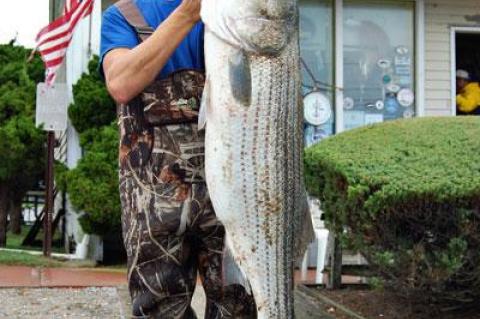 There’s Action Close to Shore
There’s Action Close to Shore“It’s Montauk,” was how Sue Jappell at Paulie’s Tackle shop in Montauk explained what happened to Robert Van Velsor on Friday.
Van Velsor was heaving a bucktail toward the horizon while standing in knee-deep water at Ditch Plain beach. He was at the end of a retrieve and was in the process of lifting the lure out of the water when a 42.46-pound striped bass snatched it. That’s the way to do it.
Nowadays, we hardly listen to our elders. Everybody wants to fast-track to the top, and young people speak a different language than us senior citizens. Everything is “cool,” but is it really? Before there was a host of school and post-school activities to attend and try to be good at, life was simple. It wasn’t easy, but it was simple. You worked hard and got along.
There were a few wise individuals who would be called prophets in the Biblical past; they proselytized to the rest of the community and tried to keep the train from leaving the track.
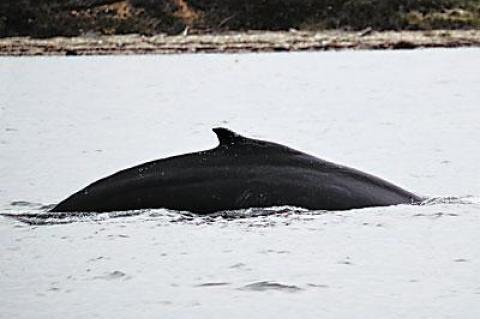 On the Water: Spoon-Trolling in a Sloop
On the Water: Spoon-Trolling in a SloopFishing under sail requires a great deal of forehandedness and attention to detail, disciplines not in evidence on Saturday when the sloop Leilani headed east out of Montauk Harbor bound for the fields of fish on the north side of Montauk Point and trolling a silver spoon.
Obviously, wind speed and direction are the first considerations. The state of the tide, which all fishermen know in order to decide on the most likely places to find hungry fish, takes on more importance under sail.
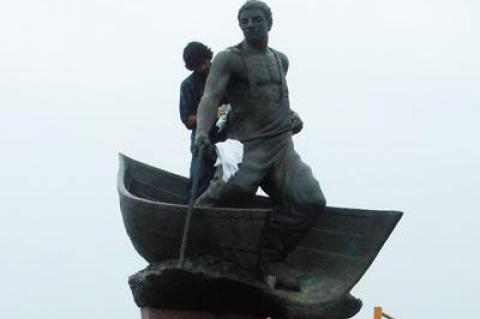 Revenge of the Fish
Revenge of the FishDo you believe in fish revenge? Whales are not fish, of course, but Moby Dick is perhaps the best example of how, at sea, what goes around, comes around. If, like Ahab, you toy with fish to find meaning in life without the proper respect for the deep and its critters, you too will get yours.
A Moby Dick-like finale played out in front of dozens of surfcasters at Turtle Cove just west of the Montauk Point Lighthouse last Thursday.
 Another Bass-Filled Month
Another Bass-Filled MonthWord has come that John DeMaio, a veteran Montauk charter fisherman, died on Monday morning in Florida. He had a number of boats during his tenure as one of Montauk’s more successful chartermen. They were all named Vivienne after his wife, who survives. A complete obituary appears elsewhere in these pages.
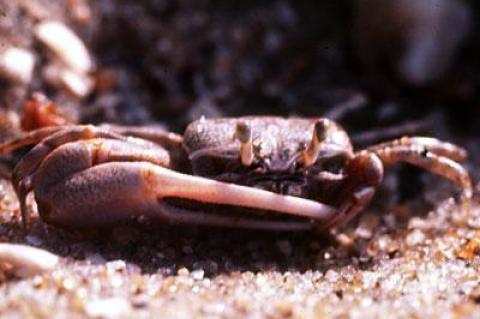 Nature Notes: Cold-Blooded Crabs
Nature Notes: Cold-Blooded CrabsIn less than two months it will be winter. Fall is the season for harvest and storage, in preparation for the cold months ahead. Very few of us maintain root cellars these days; we depend upon supermarkets and mom-and-pops to “store” our vittles. But in nature, October is a busy time. Those creatures that stay on to brave the sleet and snow are in full preparation.
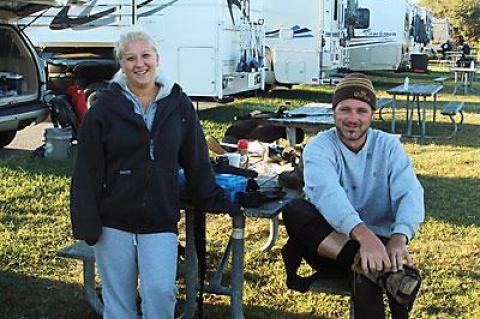 Fish Over Fame in Montauk
Fish Over Fame in MontaukUpfront is Mecca to surfcasters this time of year, the frontage being the semicircle of rocky beach and headland that surrounds the Montauk Point Lighthouse.
The scientists tell us that sea level is rising. The tide is coming in. In point of fact, sea level has been rising since about 12,000 years ago when the last ice age came to end. In some coastal areas it has risen a couple hundred feet, so sea-level rise is nothing new in the same way that volcanoes, hurricanes, tornados, earthquakes, and tidal waves are nothing new. It is only that those others were fast-acting, while sea-level rise is a creeper.
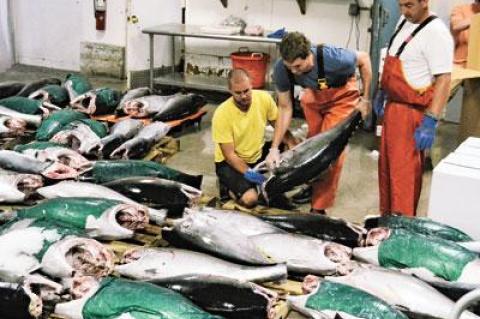 All Eyes on Bigeyes
All Eyes on BigeyesIt seems tuna of all kinds and sizes have decided to approach Long Island in great numbers. Carl Darenberg of the Montauk Marine Basin, a man who’s been around sport fishing his whole life, said the run of bigeye tuna experienced by hundreds of fishermen last week was the largest he had ever seen.
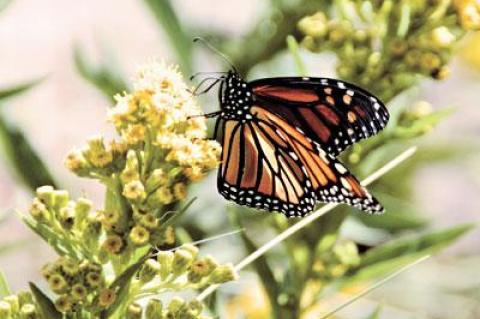 Nature Notes: Southern Migration
Nature Notes: Southern MigrationAs fall rapidly comes upon us and the evening songs of the tree crickets get slower in tempo and lower in pitch, everything else in nature is in motion, motion in all directions, sideways and up and down.
Monarch butterflies fresh out of their pupae are flying south crossing roads and fields, looking for the ocean beach roadway as they begin their journey west, then south. Many of them will make it all the way to their winter retreat in the mountains of central Mexico.
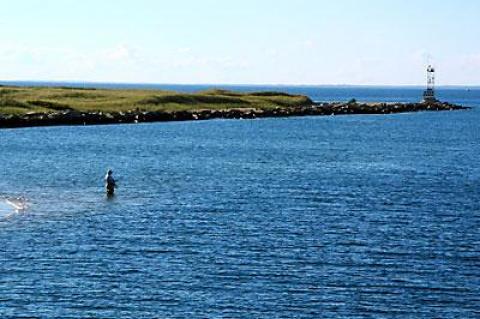 Fall Tournaments Abound
Fall Tournaments AboundSighs, and other expostulations of relief from the summer hordes, are being heard on either side of Block Island Sound, and from locals getting down to the pleasures of early fall, including the annual spate of fishing tournaments.
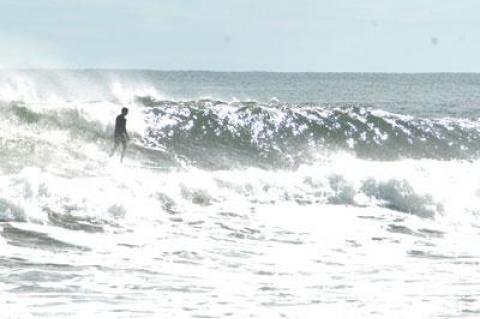 Kahuna Smiled on Espo’s Contest
Kahuna Smiled on Espo’s ContestA surf contest is a crap shoot in that it is dependent on ocean swells that in turn depend on distant storms formed by weather patterns controlled by sun spots, upper atmospheric winds, global warming, and ultimately by Kahuna, god of surf.
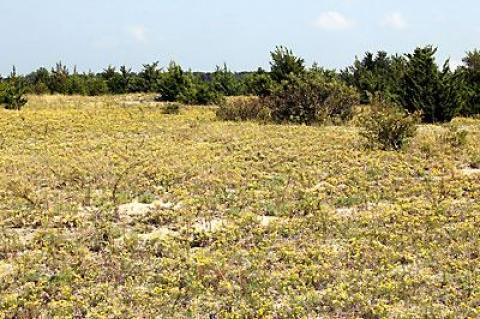 Nature Notes: Natives Are Winning
Nature Notes: Natives Are WinningIn 1999, an area two times the size of a football field was dug out of Sammy’s Beach in East Hampton to accommodate dredge spoil from the Three Mile Harbor inlet and channel. The hole was big enough to accommodate nearly 100,000 cubic yards, but the dredge job produced less than a fifth of that.
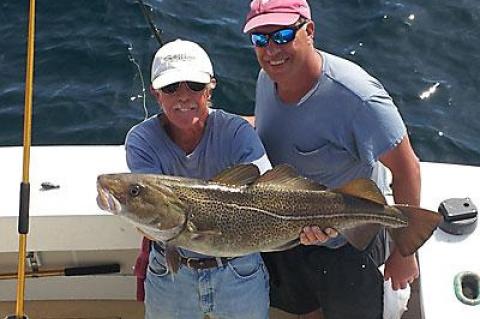 The Stripers Are Back
The Stripers Are BackIn the words of Chris Miller of the West Lake Marina, “the fish have moved back to Montauk.” Miller was speaking of striped bass, big ones. There was a 50-pounder brought to the scales and a number of stripers in the 30 to 40-pound range.
After last fall’s shortage of large fish, organizers of the annual Montauk SurfMasters Fall Classic hope the bass stick around for a while.
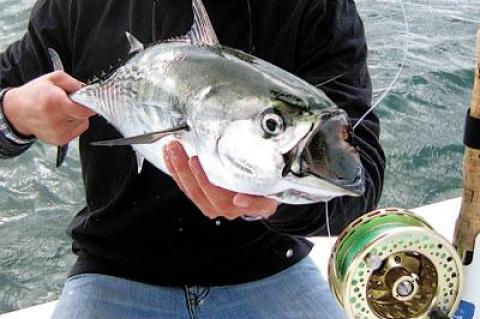 Loads ’o’ Falsies, Weakfish
Loads ’o’ Falsies, WeakfishThis can be an eerie time of year. Despite the 80-degree ocean temperature, or maybe because of it, we feel fall just under the horizon. One contributor to the pre-fall feeling is the false albacore, or little tunny. Each year schools of falsies arrive like clockwork, drawing light-tackle anglers to the East End.
Capt. Ken Rafferty, who runs a light-tackle and fly-fishing guide service out of Three Mile Harbor and, come fall, Montauk, reported that his first albie catch of the season occurred on Monday.
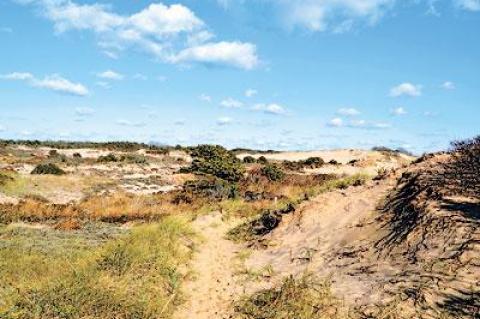 Nature Notes: An Ecologist’s Dream
Nature Notes: An Ecologist’s DreamSummer is winding down, but not with a whimper. It’s been a hot one, yes, but also one free of gypsy moths and cankerworms, and the woodlands as of this date are fully foliaged and resplendent in spots. We are blessed on Long Island with almost one of every kind of habitat in America’s lower 48, with the exception of deserts and alpine forests, and the East End has most of them, so it is an ecologist’s dream, at least this ecologist’s dream.
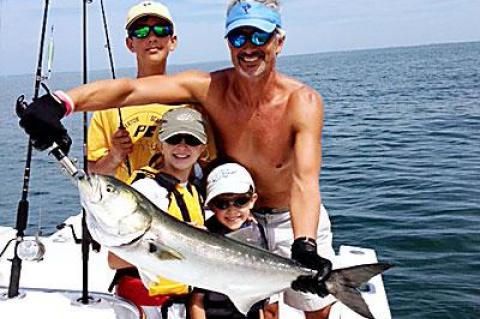 Doggish Days — and Fish
Doggish Days — and FishTechnically, we’re past the dog days of summer (based on the “dog star” Sirius’s proximity to the sun), but since Saturday’s heavy rain the weather has felt doggish and dogfish have been caught from the beach in downtown Montauk.
People have been asking, “Where have the birds gone?” There are very few birds in my own backyard here in Noyac, An occasional blue jay, robin, Carolina wren, but no steady comers with the exception of crows, which visit regularly beginning at dawn.
On the other hand, Terry Sullivan, who lives near the water’s edge in Sag Harbor, has no shortage of feathered friends. More often than not his birdbath is filled to capacity.
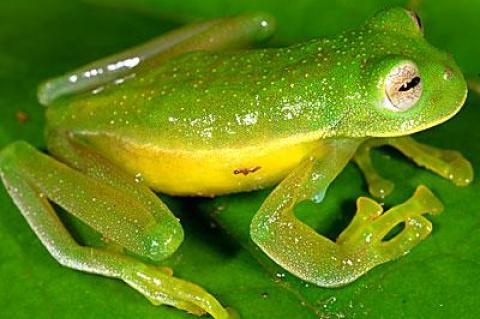 New Frog Named for Sabin
New Frog Named for SabinA new species of glass frog recently discovered in southern Peru — the 7,000th known amphibian species — has been named after Andy Sabin of Springs, a herpetology enthusiast and president of the South Fork Natural History Museum.
Centrolene sabini, or the Sabin glass frog, was found in a small stream in the Kosnipata Valley in Manu National Park, almost 3,000 meters above sea level. The inch-long frog is electric green, with partially translucent skin, small yellow dots, and a yellow underbelly. It has green bones and a long call consisting of 8 to 14 notes.
John Ryan Sr. had, when the summer began, wanted very much for the East Hampton Volunteer Ocean Rescue Squad to come to a meeting of the minds with the resorts along the Napeague strip, which are not required by the Suffolk County Health Department to post lifeguards if they prohibit ocean swimming.

